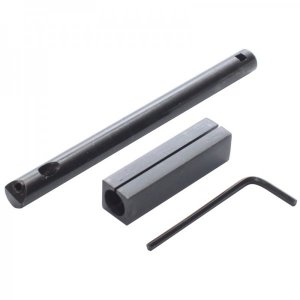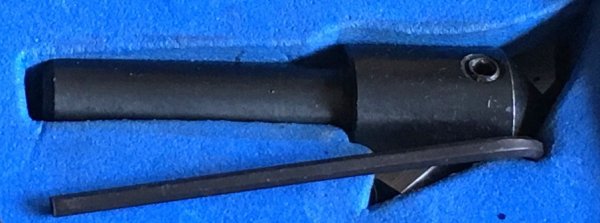While we wait for your response, let me tell you why I don't use these bars anymore. There is nothing wrong with them and they have been in use for decades, and quite successfully. Many are made in home shops but some commercial makers had them, Everede first amongst them. The reasons I don't use them is 1) because they have the same constraints that all bars have, which is the extension restrictions of the steel bar these things are made of, 2) the geometry depends on how the cutter is mounted (perpendicular to the bar or at an angle that can range from 30 degrees or more) so you have to individually grind each cutter depending on how it is mounted and 3) chip clearance is an issue with these bars and becomes a nuisance, at least for me. Finally, and not as a bias against them but more a personal observation, solid bars work better and inserted bars work even better, at least for me.
Like many hobby guys, I read all the old books, especially those penned by the British guys who made these bars so popular back in the day, and I actually made several of them and ground quite a few HSS cutters for them. Of course, I didn't know much about boring back then but I eventually formed some biases against them as I listed. I'm willing to discuss what I remember about grinding these bits but please answer the questions above first, okay?



